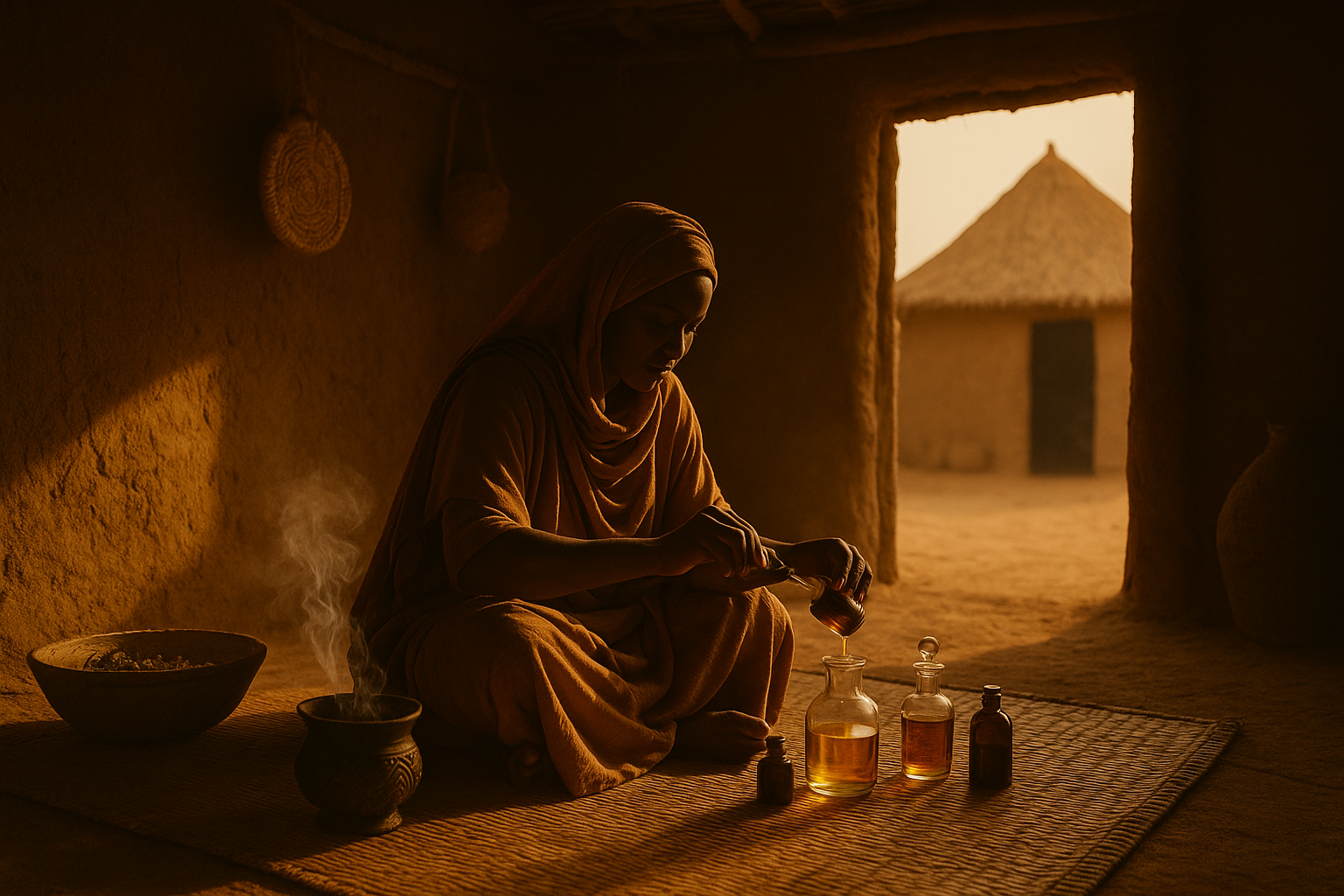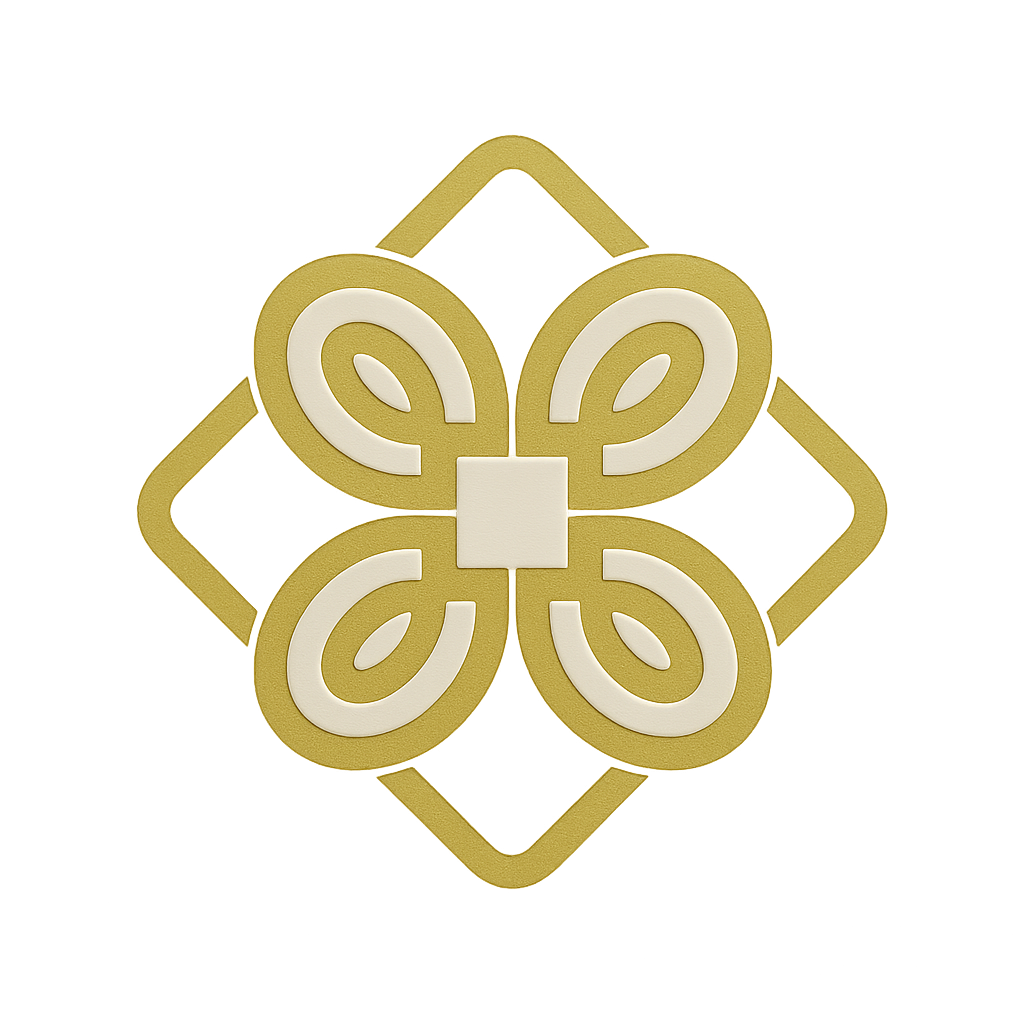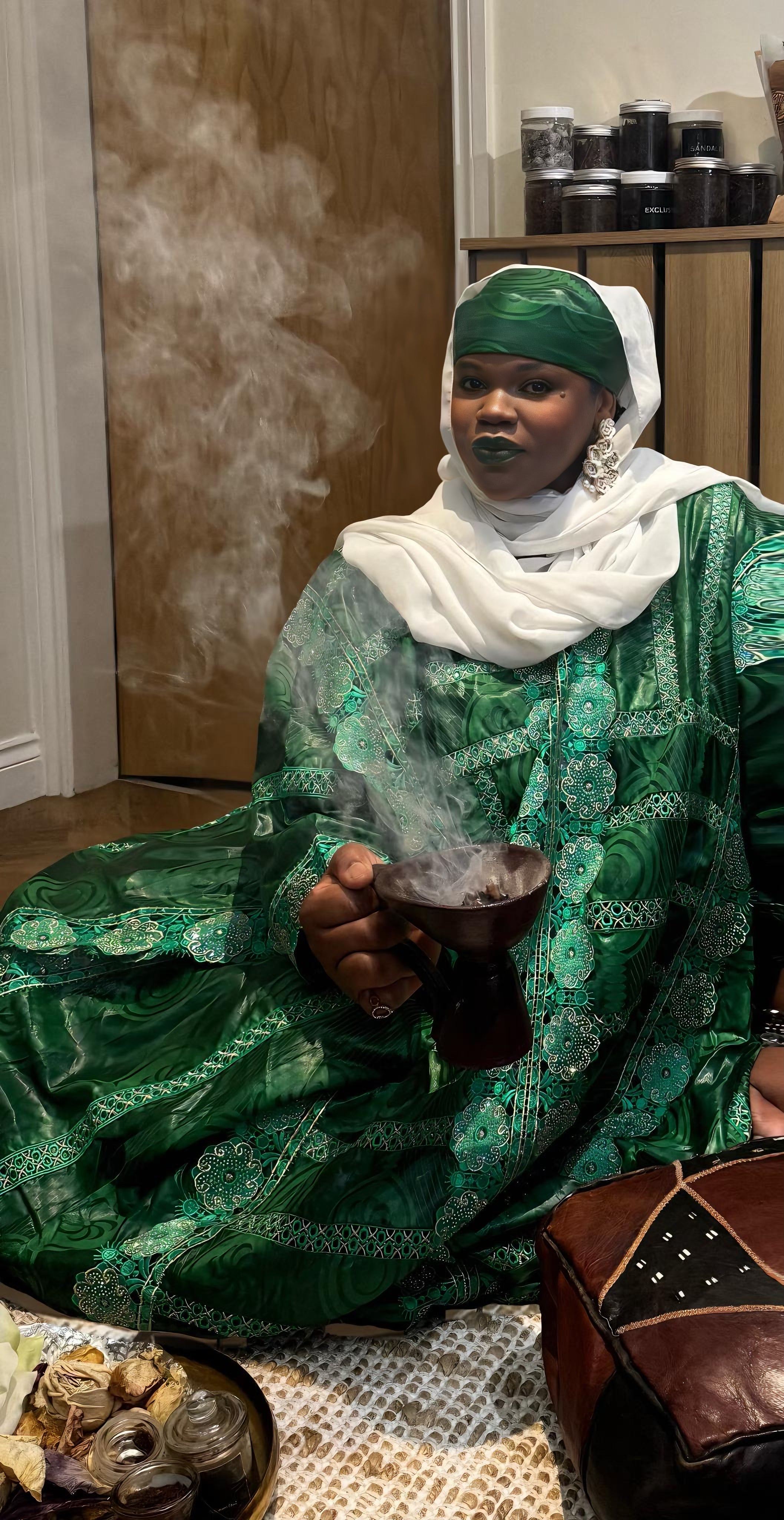Article: The Forgotten Queen of Perfume and the Continent That Taught the World to Smell

The Forgotten Queen of Perfume and the Continent That Taught the World to Smell
Africa has always smelled divine, the world just didn’t give her credit.
Okay, let’s play a little game.
When I say “perfume,” what comes to mind?
Paris? Chanel No. 5? Maybe something from Dubai? oud, musk, amber?
But here’s the plot twist nobody talks about: the world’s best-selling perfume wasn’t French. It wasn’t European at all. It came from Africa.
Yes! Africa. The cradle of scent, the birthplace of beauty rituals, the home of oils, resins, and rituals that shaped perfumery long before fancy bottles existed.
Grab your cup of mint tea (or your favourite Sahilia oil), because we’re going on a scent journey across Africa, from the souks of Morocco to the sands of Sudan, the courtyards of Senegal, and the perfume pots of northern Nigeria.
Morocco : Where the Air Smells Like Colour
If scent had a soundtrack, Morocco would be jazz. You step into a souk in Marrakech and it’s chaos, the best kind. Orange peels drying in the sun, mint tea steaming behind wooden stalls, piles of saffron and cumin glowing in the light.
Then comes the smoke, oud, gum arabic, amber resin, curling in soft waves around the corners of the Medina. There’s sweetness, there’s spice, there’s mystery.
Even the air hums with perfume. Here, scent isn’t something you wear; it’s something you live inside.
Senegal: Smoke, Stories, and Thiouraye Magic
Now imagine following that trail of scent down the coast to Senegal. The first thing that greets you isn’t a person, it’s a smell.
Sweet, smoky, and warm: 'thiouraye'.
It’s part incense, part perfume, part love language.
Senegalese women have been making thiouraye for centuries: shavings of wood, herbs, grains of incense, all soaked in perfumed oils like musk, amber, and sandalwood. There’s no single recipe. Every woman guards hers like a family secret, tweaking it with whatever she has: a touch of clove, a handful of grain, a drop of oud.
When it burns, the smoke doesn’t rise sharply like incense, it curls, lazily, slowly, like it knows it has nowhere else to be. It perfumes your clothes, your room, your memories.
Some say it’s used to enchant men.
Others say it’s just how a home should smell.
Either way , we’re not arguing.
Sudan: The Birthplace of Bint El Sudan, The African Chanel No.5
Now to Sudan, where the desert heat meets centuries of trade and fragrance.
Here, in the early 1900s, a British trader named Eric Burgess was asked by a group of Arab chiefs to create a perfume, something beautiful, powerful, and unmistakably African.
He returned to England, blended the essences they’d brought florals, resins, amber, and musk and created Bint El Sudan, which means Daughter of Sudan.
No alcohol, no gimmicks. Just a thick, golden oil with a smell that could melt the Sahara.
It sold across Africa like wildfire. Pilgrims carried it to Mecca. Traders used it as currency. Women wore it for weddings, births, and every ordinary day in between.
And the bottle? A small green glass with a label showing a bare-shouldered Sudanese woman — daring, bold, unforgettable. In northern Nigeria, where modesty is law, it became both scandalous and irresistible. The forbidden bottle everyone still secretly kept.
For decades, Bint El Sudan was the world’s most sold perfume. Not Dior, not Chanel, but Bint El Sudan.
And yet… nobody tells that story.
Nigeria: The Home of Humrah and Hidden Blends
Head west to northern Nigeria, and you’ll find another treasure humrah (or khumra).
Ask anyone from Borno, Sokoto, or Kano, and they’ll tell you it’s not just perfume, it’s a process. Roasted shells ground to powder. Oils of sandalwood, musk, amber, and sometimes cloves, mixed, poured, and left to mature in glass jars for months. The colour deepens, the scent evolves, and when it’s ready it’s poured into the palm and rubbed all over the body like a sacred ritual.
No two bottles smell the same. That’s the beauty.
Each one carries the hand, the home, and the patience of the woman who made it.
Humrah doesn’t announce itself; it lingers close, soft and smoky, the kind of scent that makes people lean in and ask, “What are you wearing?”
Egypt, Ethiopia, and the Horn: Where It All Began
Long before all of this , before the souks, the thiouraye, and the bottles there was Egypt and the Horn of Africa.
Perfume was born here. Literally. The earliest written recipes for scent were found on papyrus scrolls from ancient Egypt, blends of lilies, resins, and oils used to anoint the body and honour the divine.
Ethiopia gave the world frankincense and myrrh, traded across continents for thousands of years. These weren’t just pleasant smells, they were sacred, medicinal, and deeply cultural.
Even today, in small villages across the region, smoke from resins still rises at dawn, the same way it did 6,000 years ago. Some rituals never die. They just evolve.
A World That Smells Like Home
Everywhere you go on the continent, scent tells a story.
The sharp freshness of lemongrass in Ghana.
The sweet heaviness of cocoa and shea in West Africa.
The earthy calm of vetiver in Madagascar.
The deep warmth of amber and oud in the Sahel.
Africa doesn’t wear perfume , Africa is perfume.
And somewhere between the smoky embers of thiouraye and the lingering notes of humrah lies the reason Sahilia exists , to reawaken these scented stories, one drop at a time.
So This Black History Month...
When you think of perfume, remember this:
Before glass bottles, there were clay pots.
Before atomisers, there were hands.
And before branding, there was belonging.
Africa has always smelled divine, the world just didn’t give her credit.



1 comment
Love! love!! the blog! Morocco has always been at the top of my bucket list (looking forward to experiencing it إن شاء الله). I never knew bint al sudan was such a hit…wow! 😯
Don’t forget turaren wuta for Nigeria, at this rate i don’t think anyone can touch our creative, ever evolving turaren wuta blends (second to none).
Such an insightful blog. ❤️
Umaymah Kashim
Leave a comment
This site is protected by hCaptcha and the hCaptcha Privacy Policy and Terms of Service apply.